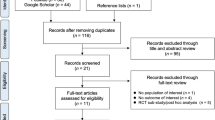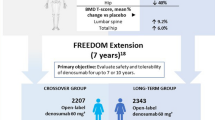Abstract
Summary
Following 150 mg of oral ibandronate, Taiwanese females have greater serum and urine levels of this drug and bone resorption marker suppression than Caucasian women. These inter-ethnic differences seems to be partly explained by a 2.48-fold higher bioavailability of ibandronate in Taiwanese postmenopausal women.
Introduction
Interethnic differences in the pharmacokinetics of oral ibandronate for osteoporosis are unknown. We compared the disposition of oral ibandronate between Caucasian and Taiwanese postmenopausal women.
Methods
Ibandronate 150 mg was administered to 35 Caucasian and 16 Taiwanese postmenopausal women in two separate phase 1 studies. Interethnic comparisons were performed to assess pharmacokinetic properties, including the area under the concentration-time curve (AUC), peak concentration (Cmax), elimination half-life, urinary drug recovery (Ae%), renal clearance (CLr), apparent total clearance (CL/F), and apparent volume of distribution (Vd/F).
Results
The mean AUC, Cmax, and Ae% were 2.41-, 1.69-, and 2.95-fold greater in the Taiwanese than in the Caucasian subjects, and the average CL/F and Vd/F were 2.48- and 2.46-fold smaller. There were no significant differences in mean CLr and half-life between both groups. As bisphosphonates are not biotransformed but are mainly excreted in the urine, the total body clearance is close to the CLr. These results suggested a larger bioavailability in the Taiwanese group which resulted in the differences in the CL/F and Vd/F. Multiple linear regression analysis demonstrated ethnicity influences of the pharmacokinetic properties after adjusting for the other variables.
Conclusions
Bioavailability was largely responsible for the interethnic pharmacokinetic differences following oral administration of 150 mg ibandronate and seemed greater in the Taiwanese compared with the Caucasian subjects. Further dose-ranging studies are warranted to determine the optimal dosages of oral ibandronate in patients of Asian or Taiwanese ethnicity



Similar content being viewed by others
References
Albert SG, Reddy S (2017) Clinical evaluation of cost efficacy of drugs for treatment of osteoporosis: a meta-analysis. Endocr Pract 23:841–856
Murad MH, Drake MT, Mullan RJ et al (2012) Clinical review. Comparative effectiveness of drug treatments to prevent fragility fractures: a systematic review and network meta-analysis. J Clin Endocrinol Metab 97:1871–1880
Khan AA, Morrison A, Hanley DA et al (2015) Diagnosis and management of osteonecrosis of the jaw: a systematic review and international consensus. J Bone Miner Res 30:3–23
Ruggiero SL, Dodson TB, Fantasia J, Goodday R, Aghaloo T, Mehrotra B, O’Ryan F, American Association of O, Maxillofacial S (2014) American Association of Oral and Maxillofacial Surgeons position paper on medication-related osteonecrosis of the jaw--2014 update. J Oral Maxillofac Surg 72:1938–1956
Shane E, Burr D, Abrahamsen B et al (2014) Atypical subtrochanteric and diaphyseal femoral fractures: second report of a task force of the American Society for Bone and Mineral Research. J Bone Miner Res 29:1–23
Lo JC, Hui RL, Grimsrud CD, Chandra M, Neugebauer RS, Gonzalez JR, Budayr A, Lau G, Ettinger B (2016) The association of race/ethnicity and risk of atypical femur fracture among older women receiving oral bisphosphonate therapy. Bone 85:142–147
Sedghizadeh PP, Stanley K, Caligiuri M, Hofkes S, Lowry B, Shuler CF (2009) Oral bisphosphonate use and the prevalence of osteonecrosis of the jaw. an institutional inquiry. J Am Dent Assoc 140:61–66
Chiu WY, Chien JY, Yang WS, Juang JM, Lee JJ, Tsai KS (2014) The risk of osteonecrosis of the jaws in Taiwanese osteoporotic patients treated with oral alendronate or raloxifene. J Clin Endocrinol Metab 99:2729–2735
Chiu WY, Yang WS, Chien JY, Lee JJ, Tsai KS (2018) The influence of alendronate and tooth extraction on the incidence of osteonecrosis of the jaw among osteoporotic subjects. PloS one 13:e0196419
Reginster JY, Wilson KM, Dumont E, Bonvoisin B, Barrett J (2005) Monthly oral ibandronate is well tolerated and efficacious in postmenopausal women: results from the monthly oral pilot study. J Clin Endocrinol Metab 90:5018–5024
Denney W, Duvvuri S, Buckeridge C (2015) Simple, automatic noncompartmental analysis: the PKNCA R package. Journal of Pharmacokinetics and Pharmacodynamics 42:11–107 S165
Meibohm B, Evans WE (2006) Clinical pharmacodynamics and pharmacokinetics. In: Helms RA (ed) Textbook of therapeutics: drug and disease management, Eighth edn. Lippincott Williams and Wilkins, Philadelphia, pp 1–30
Lacey LF, Keene ON, Pritchard JF, Bye A (1997) Common noncompartmental pharmacokinetic variables: are they normally or log-normally distributed? J Biopharm Stat 7:171–178
Benet LZ, Zia-Amirhosseini P (1995) Basic principles of pharmacokinetics. Toxicol Pathol 23:115–123
Bauss F, Russell RG (2004) Ibandronate in osteoporosis: preclinical data and rationale for intermittent dosing. Osteoporos Int 15:423–433
Bauss F, Endele R, Besenfelder E, Hoelck JP (2002) Ibandronate: serum kinetics, tissue distribution and binding to bone following intravenous bolus injection. Calcified Tissue Internation 70:289–290 [Abstract P-128
Muhlbauer RC, Bauss F, Schenk R, Janner M, Bosies E, Strein K, Fleisch H (1991) BM 21.0955, a potent new bisphosphonate to inhibit bone resorption. J Bone Miner Res 6:1003–1011
Barrett J, Worth E, Bauss F, Epstein S (2004) Ibandronate: a clinical pharmacological and pharmacokinetic update. Journal of clinical pharmacology 44:951–965
Lin JH (1996) Bisphosphonates: a review of their pharmacokinetic properties. Bone 18:75–85
Cremers S, Papapoulos S (2011) Pharmacology of bisphosphonates. Bone 49:42–49
Epstein S, Zaidi M (2005) Biological properties and mechanism of action of ibandronate: application to the treatment of osteoporosis. Bone 37:433–440
Rowland M, Tozer TN (2011) Clinical pharmacokinetics and pharmacodynamics: concepts and applications. Wolters Kluwer Health/Lippincott William & Wilkins, Philadelphia
Porras AG, Holland SD, Gertz BJ (1999) Pharmacokinetics of alendronate. Clin Pharmacokinet 36:315–328
Boulenc X, Marti E, Joyeux H, Roques C, Berger Y, Fabre G (1993) Importance of the paracellular pathway for the transport of a new bisphosphonate using the human CACO-2 monolayers model. Biochemical pharmacology 46:1591–1600
Twiss IM, de Water R, den Hartigh J, Sparidans R, Ramp-Koopmanschap W, Brill H, Wijdeveld M, Vermeij P (1994) Cytotoxic effects of pamidronate on monolayers of human intestinal epithelial (Caco-2) cells and its epithelial transport. Journal of pharmaceutical sciences 83:699–703
Lin JH, Chen IW, deLuna FA (1994) On the absorption of alendronate in rats. Journal of pharmaceutical sciences 83:1741–1746
Khosla S, Bilezikian JP, Dempster DW, Lewiecki EM, Miller PD, Neer RM, Recker RR, Shane E, Shoback D, Potts JT (2012) Benefits and risks of bisphosphonate therapy for osteoporosis. J Clin Endocrinol Metab 97:2272–2282
Nakai K, Tobinai M, Hashimoto J, Iida S, Kawanishi T (2016) The optimal oral dose selection of ibandronate in Japanese patients with osteoporosis based on pharmacokinetic and pharmacodynamic properties. Eur J Drug Metab Pharmacokinet 41:139–147
Gural RP, Chungi VS, Shrewsbury RP, Dittert LW (1985) Dose-dependent absorption of disodium etidronate. J Pharm Pharmacol 37:443–445
Nakamura T, Ito M, Hashimoto J et al (2015) Clinical efficacy and safety of monthly oral ibandronate 100 mg versus monthly intravenous ibandronate 1 mg in Japanese patients with primary osteoporosis. Osteoporos Int 26:2685–2693
Muramatsu A, Azuma T, Okuda T, Satomi S, Ohtani M, Lee S, Suto H, Ito Y, Yamazaki Y, Kuriyama M (2005) Association between interleukin-1beta-511C/T polymorphism and reflux esophagitis in Japan. J Gastroenterol 40:873–877
Morihara M, Aoyagi N, Kaniwa N, Kojima S, Ogata H (2001) Assessment of gastric acidity of Japanese subjects over the last 15 years. Biol Pharm Bull 24:313–315
Pillai G, Gieschke R, Goggin T, Barrett J, Worth E, Steimer JL (2006) Population pharmacokinetics of ibandronate in Caucasian and Japanese healthy males and postmenopausal females. Int J Clin Pharmacol Ther 44:655–667
Acknowledgments
We are grateful to Ms Shu-Chen Chung for her assistance in data request and Professor Yung-jin Lee for his valuable comment on R-based tools for pharmacokinetic modeling.
Author information
Authors and Affiliations
Corresponding authors
Ethics declarations
Disclaimer
This work was authorized and supported by F. Hoffmann-La Roche Ltd. (Basel, Switzerland). The views and conclusions contained herein are those of the authors and do not represent those of F. Hoffmann-La Roche Ltd.
Conflicts of interest
None.
Additional information
Publisher’s note
Springer Nature remains neutral with regard to jurisdictional claims in published maps and institutional affiliations.
Electronic supplementary material
ESM 1
(DOCX 444 kb)
Rights and permissions
About this article
Cite this article
Chiu, WY., Lin, CJ., Yang, WS. et al. Racial difference in bioavailability of oral ibandronate between Caucasian and Taiwanese postmenopausal women. Osteoporos Int 31, 193–201 (2020). https://doi.org/10.1007/s00198-019-05127-y
Received:
Accepted:
Published:
Issue Date:
DOI: https://doi.org/10.1007/s00198-019-05127-y




